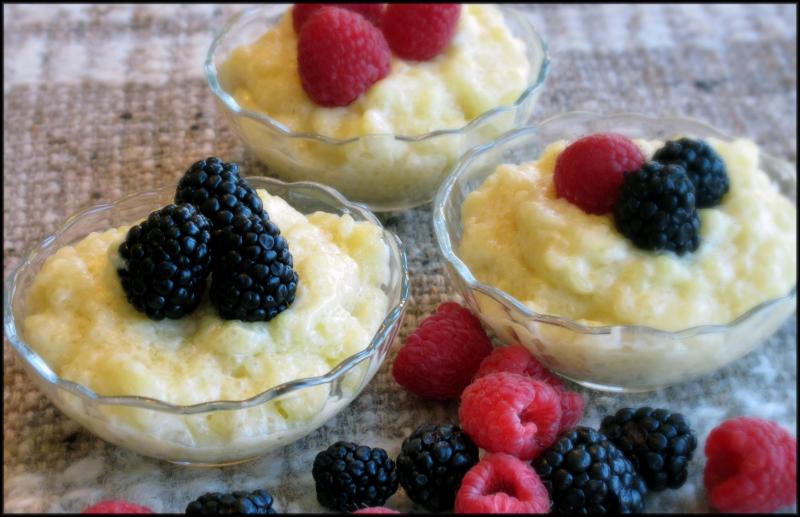Tapioca has a tropical connection
On a recent cruise through the western Caribbean, we spent one of our afternoons at an “enrichment lecture.” Most cruise lines offer these programs, which are presented by scholars and researchers familiar with the region where the ship is traveling. Although our speaker was less an expert and more a passionate amateur, she offered several insights on the topic of New World foods.
The first discovery from her talk was the wide range of uses for cassava. Native to Central and South America, this perennial shrub is also called manioc, yuca, and manihot. The roots are slender, elongated, rough-skinned tubers with brown skin and white flesh. For centuries, cassava has been a reliable source of food as the plant grows in a variety of tropical climates.
However, in order to eat cassava, it must first be processed to remove its naturally occurring cyanide compounds. While no one has documented the origins, there are several methods of treating the flesh. Sweeter varieties of cassava root are peeled and cooked. They’re typically used much like sweet potatoes in the diet and often served with boiled cassava leaves.
Bitter varieties of cassava root, which have more cyanide compounds, require a more complicated set of techniques, including fermenting, grating and sun drying. For cassava flour, the large roots are peeled, ground, soaked, drained and toasted. The flour is gluten-free and very close to wheat flour in its cooking properties.
Another important product from cassava is tapioca, an excellent thickening agent. Tapioca is produced in a variety of forms, from flour to flakes, granules and small pellets resembling couscous. The flakes and granules can be used to thicken gravies, stews and pie fillings. However, neither of these forms nor the pellets will completely dissolve - a feature familiar to anyone who has enjoyed tapioca pudding (see photo).
Finally, cassava juice is an important ingredient in one of the region’s signature dishes, a spicy stew called pepperpot. The bitter juice is boiled until as thick and dark as molasses, and then spiced with cinnamon, cloves and cayenne pepper. The final product, called cassareep syrup, is used as a seasoning. The cooking vessel to boil the syrup is typically a soft clay pot, which would absorb the signature flavors of the cassareep.
This same pot would then be used to make pepperpot, a combination of leftover cuts of meat, various root vegetables and lots of hot peppers. Legends about the longevity of a single pot of this ever-simmering mixture have persisted in the region. Some cooks claim their pepperpot has been maintained over the fire for decades.
Because cassareep is reputed to have antiseptic and preservative properties, this may well be plausible. If some of the black cassareep was added each time another piece of meat was tossed into the stew, who knows how long it might last. And, to add to the urban legends, since George Washington had traveled to Barbados, he was familiar with pepperpot. When he was leading the Revolutionary Army through the brutal winter at Valley Forge, Washington was reported to have fed pepperpot to his cold and hungry men. With limited provisions and less-than-quality ingredients, it is not much of a stretch to believe a cauldron of oxtails, pig knuckles and parsnips may have been on the menu.
There are several versions of “authentic” pepperpot, from the Guyanese version (root vegetables, trotters and beef scraps) to Jamaican-style (pig’s tail and boiled leafy greens called callaloo) to the Philadelphia recipe (featuring tripe and dumplings). Since I didn’t have all the ingredients on hand, I elected not to try making any of these.
I have included a recipe for the tapioca pudding in the photo, using commercially packaged tapioca pearls. This version used quick-cooking small tapioca, but the pearls are available in various sizes and two colors (white and black). Some of the larger-sized pearls may require pre-soaking, typically overnight. They will all have an aggressive thickening effect and do not dissolve, leaving your dish studded with glistening balls of gel-like tapioca.
Although tapioca pudding is simple to make, you’ll want to remain faithful to the instructions, especially the 10 minutes of soaking at the start, to make sure the pearls absorb enough liquid. Tempering the whipped eggs by mixing in some of the heated milk mixture will prevent the formation of scrambled eggs in the final steps.
Tapioca pudding is delicious served warm or chilled, with a dollop of whipped cream, a scattering of berries or a drizzle of honey. To change the flavor profile, you can substitute brown sugar for a hint of molasses or stir in freshly ground nutmeg for spicy notes.
The best recipes featuring tapioca flour and cassava flour are on the Bob’s Red Mill website where you’ll find hints and tips on both of these gluten-free flour choices. They both have their quirks and are not perfect one-for-one replacements, but offer useful options.
And, as for the rich, flavorful cassareep syrup, if you prefer not to make your own (getting rid of the cyanide is somewhat daunting), there are a few internet vendors who supply this tasty ancestor to Worcestershire sauce. Be sure to read the reviews, as some suppliers have a better reputation than others. Next cruise, we’ll have to get some from one of the local Caribbean markets.
Tapioca Pudding
2 eggs
3 C milk
1/3 C sugar
1/2 C tapioca
pinch salt
1 t vanilla
In a small bowl, whisk the eggs until smooth; set aside. In a medium saucepan, whisk together milk, sugar, tapioca and salt. Allow to stand for about 10 minutes without heating. Set heat to medium and bring mixture to a simmer, stirring constantly.
Continue to simmer for about 2 minutes. Temper the eggs by transferring about 2/3 C of the heated milk mixture to the bowl of whisked egg, stirring constantly.
Return the egg and milk mixture to the saucepan and cook over low until thickened, about 3 minutes. Remove from heat and stir in vanilla.
Cover the pudding with plastic wrap, making sure the film adheres to the surface of the pudding. Allow to cool for about 20 minutes. Transfer pudding into small cups or bowls. Serve garnished with berries, whipped cream or honey. Yield: 4 to 6 servings.






















































